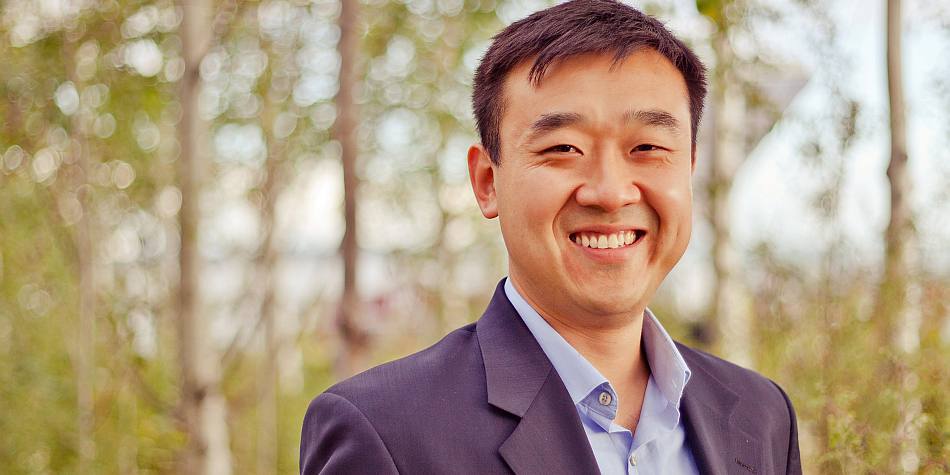Going Green had the chance to sit down with author, entrepreneur, and scientist Jimmy Jia in the latest episode of Going Green, coming to all podcast platforms this Friday. In the episode, we talk about Jimmy’s transition from being a scientist into being a successful business owner and entrepreneur, and what he is most excited about in the clean tech space. Let’s take a moment to get to know Jimmy Gia.
Hey Jimmy, tell us about the industry you work in & your company:
I work in Climate Finance / Sustainable Energy. I am the Managing Director of The Jia Group
Role In Company:
Through my company, I am involved in several activities:
Board Member, Center for Sustainable Energy in San Diego
Board Member, CleanTech Alliance, Seattle
Visiting Scholar, The Energy and Environmental Management Institution, George Washington University

How did you get involved in the sustainable industry?
My goal has always been to reduce overall consumption, instead of becoming more efficient at consuming. It’s an important difference.
My first degree was in Material Science back at MIT. In Material Science, most of what we do are energy balance calculations. Since the nanomachines we make are so small, by measuring the input and output energy, we can actually know what we made. The electric grid, and larger energy system, is still just an energy balance. I was interested in how to merge the energy balance with business principles. Nerdily, I was seeking “to create a company that obeyed the laws of physics”.
I started in 2009 by starting my former company whose initial purpose was creating energy dashboards for the built environment. We realized very quickly that, although monitoring the energy consumption could affect operational decisions that reduced consumption, it did not affect the capital purchases that “baked in” the energy footprint of a building for decades. Furthermore, in many cases, the first place that the budget for the utility bill and the capital equipment converged was at the CFO. Thus, we were left with a question: How do you design a product on energy that the CFO would care about?
How Do You?
The answer was budgets and strategy. When we aggregate all of the utility-related costs (electricity, water, trash, equipment purchases, debt, facility costs, maintenance, etc.), it could be as much as 10-15% of a company’s budget. Second, making holistic decisions that affect multiple departments becomes a strategic planning exercise. For instance, let us assume employees want to be comfortable with cool air. One can “rent” that cold air with an air conditioner and a monthly utility bill. One can also “purchase” cold air by investing in better insulation and weatherproofing the windows. The key difference is that “renting” cold air requires a monthly expense while “purchasing” cold air is costlier up front, but you don’t have a monthly bill anymore. This framing of the problem translated the energy expense into what I call Energy-as-Strategy. Most strategists will look at financial indicators to diagnose operational and strategic direction of an organization. Me and my team use energy indicators to diagnose organizational, operational and strategic problems. Because we use a different lens, we usually identify different risks and opportunities that would otherwise be left on the table if an executive relied solely on the financial analysis.
Energy is just one step away from Climate Impact. Since 2019, we have also expanded this method to serve the investors, private equity and other institutional investors. These groups need guidance that the companies and assets in their portfolio are pursuing ESG goals and on target. With our ability to diagnose Energy-As-Strategy, we can help these investors understand their climate-related exposures across their portfolio. Thus we’ve started looking at the gap between a company’s financial strategy and ESG strategy and diagnose whether the two are aligned and pointing in the same direction, or mis-aligned (usually unintentionally) and could be more effective if they were aligned.
What trends are you seeing in your industry?
I am seeing an increased interest in and a proliferation of energy, cleantech and climate-related tools, especially in the investor space. A community of people have decided that increasing the flow of capital towards green investments is a good thing. However, since it’s in the early days, there’s a lot of competing methods and standards of how to do that. So it’s the exciting days of figuring out which methodology and toolkit will be the widely adopted one.
What is one “Action Item” the viewers can take away from this conversation?
Investors are paying attention at climate-related exposures more intensely than before. Although we still have a long way to go, it’s a promising sign that we will start to see meaningful corporate action.
Be sure to follow Jimmy at his website and LinkedIn.
Dylan Welch is the CEO and Host of Going Green, a podcast, website, and social media brand that highlights renewable energy, cleantech, and sustainable news.